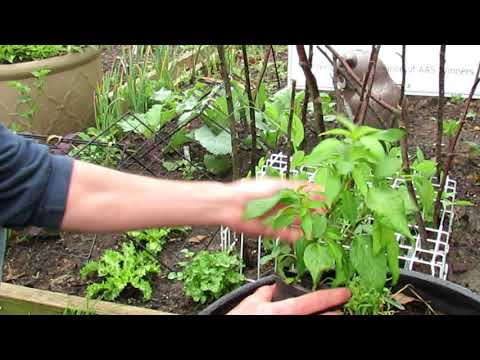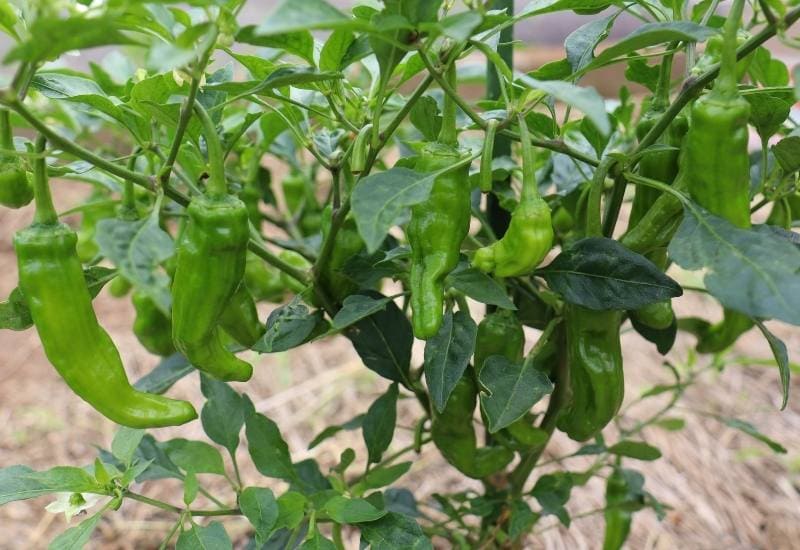
Do you love peppers but can’t tolerate the heat of the Jalapeño? Then shishito peppers are for you.
These sweet, mild-heat peppers can be grown quite successfully in the home garden, or cultivated in pots in your home.
Shishito peppers are used in a variety of traditional Japanese dishes and are also delicious fried as an appetizer on their own.
To grow shishito peppers, the first thing you need is plenty of heat and light. From germination right through to harvest, they benefit from plenty of compost, consistent watering, and lots of sunlight.
And in a few months, you will know why these peppers are quickly becoming a modern rave.
Let’s learn how to grow this sweet, delicious pepper from seed.
What Are Shishito Peppers?
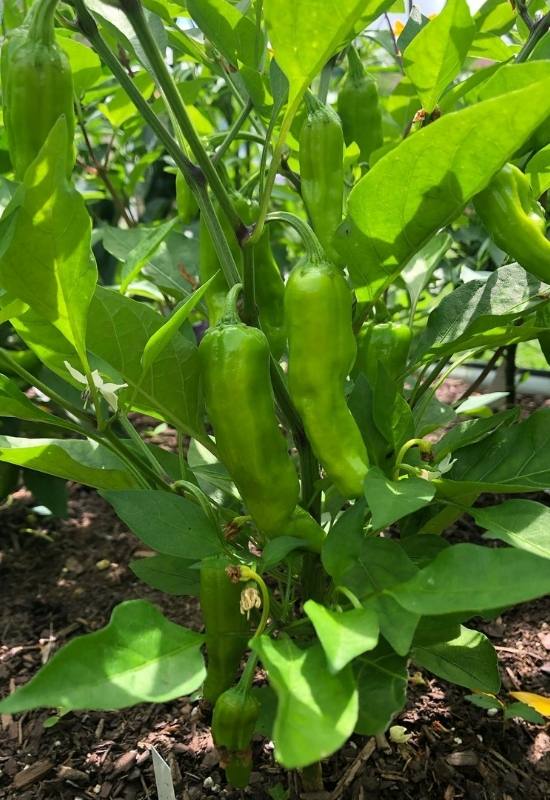
How To Grow Shishito Peppers
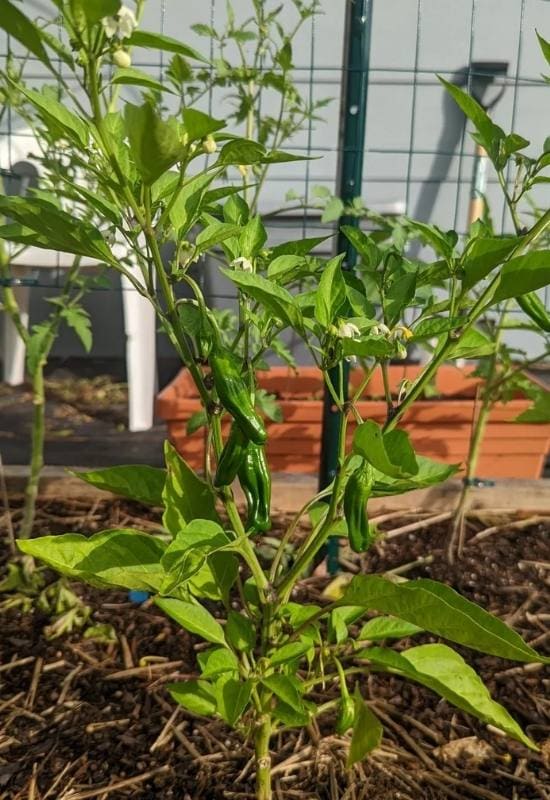
For those living in northern climates, the days to maturity are not the issue with growing shishito peppers as they start producing fruit in roughly 60 days from transplant.
The issue is providing enough heat. Like all peppers, shishitos need a constant supply of heat throughout their entire growth for successful growth and harvest.
Start Your Shishito Peppers Seed Indoors
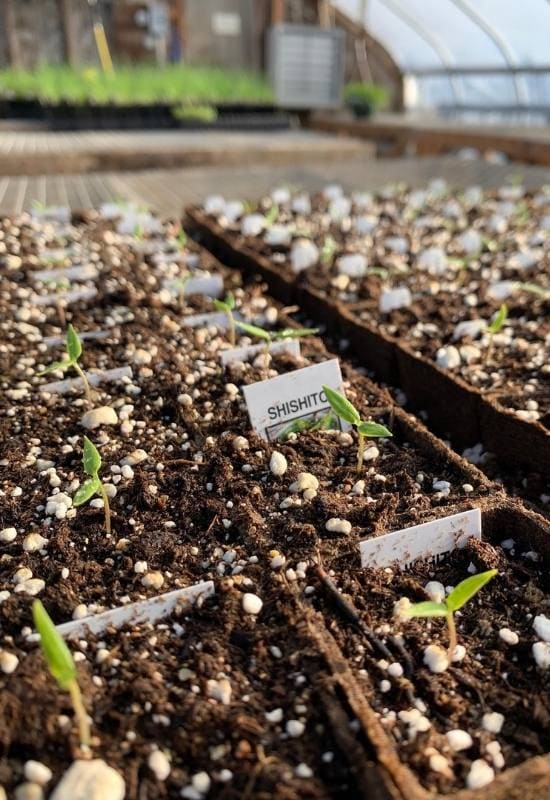
Start shishito pepper seeds indoors around 8 weeks before the last frost date, or before you plan on transplanting. They need warm soil, around 25°C to 29°C (78-85°F), to properly germinate, so consider buying a heat mat. Shishito seeds takes a fairly long time to Germinate, and the seeds should emerge in 10 to 21 days.
They also require very bright lights while indoors. Light filtering through a window will not be sufficient, so consider a grow lamp, or at least a grow light bulb that can be inserted in a regular fixture. Put the light on a timer and make sure your peppers receive 12 to 16 hours of artificial light per day.
Soaking the seeds prior to planting can be beneficial by it is not necessary. Keep the soil and seeds evenly watered and make sure they are moist at all times.
Shishito Seedling Care
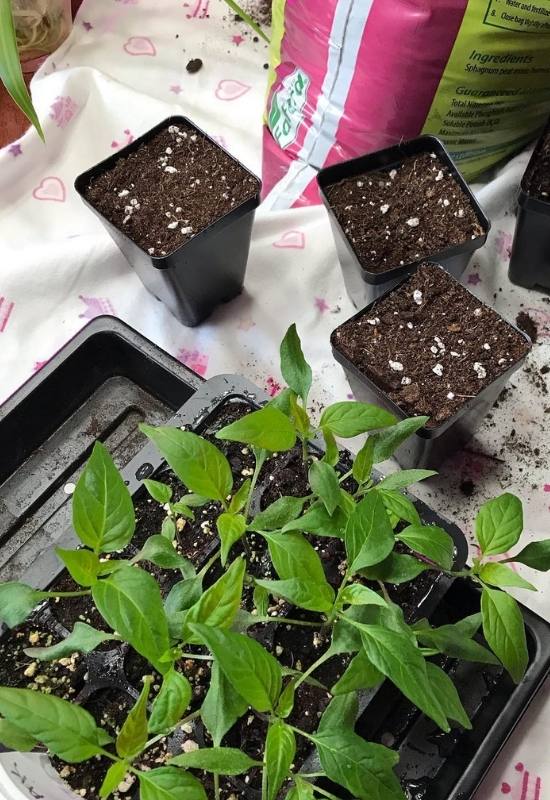
Once the shishito seedlings have emerged, they do not require as regular watering as before. Allow the soil to dry between waterings, as too much moisture can cause fungus and death of the seedlings.
They still require plenty of light. Lack of light will result in leggy plants that are more likely to wither and die during transplanting. Those that do make it will not thrive and will bear poorly on the spindly plants.
Temperature at this point can decrease slightly, but they still do best with 18°C to 24°C (64-75°F) during the day, and between 16°C to 18°C (61-64°F) overnight.
Make sure to move your seedlings into a larger pot if they show signs of outgrowing the current one and becoming root-bound.
Once your pepper plant has several sets of true leaves, it might benefit from “topping” or removing the growing tip of the plant to encourage bushier growth which can improve yield on a sturdier plant.
Simply cut off the top of the main growing stem of the plant just above a growth node or side stem.
Here is an excellent video that goes into detail on how to top pepper plants.
Harden Off And Transplant Shishito Starts Outdoors
Transplant shishito peppers outside into the garden when all danger of frost has passed and the nighttime temperatures stay over 12°C (55°F). Harden off the plants for a few weeks before transplant by setting them out during the day and bringing them in during the night.
Prepare the soil by adding plenty of organic compost to feed the hungry plants. Shishito peppers will also benefit from lime or another calcium source in the soil.
Plant them 30cm to 60cm (12-24 inches) apart in full sun. You can also lay down plastic around the plants to help warm the soil, but make sure the shishito peppers receive proper watering.
Keep the soil evenly moist for good growth, but they will tolerate it if the soil does dry out.
Do Shishito Peppers Need Staking?
Hopefully, yes! Many shishito pepper plants will grow very well without any support, but plants heavily laden with peppers can benefit from a support stake to keep from falling over under the weight of the harvest.
Growing Shishito Peppers In Pots
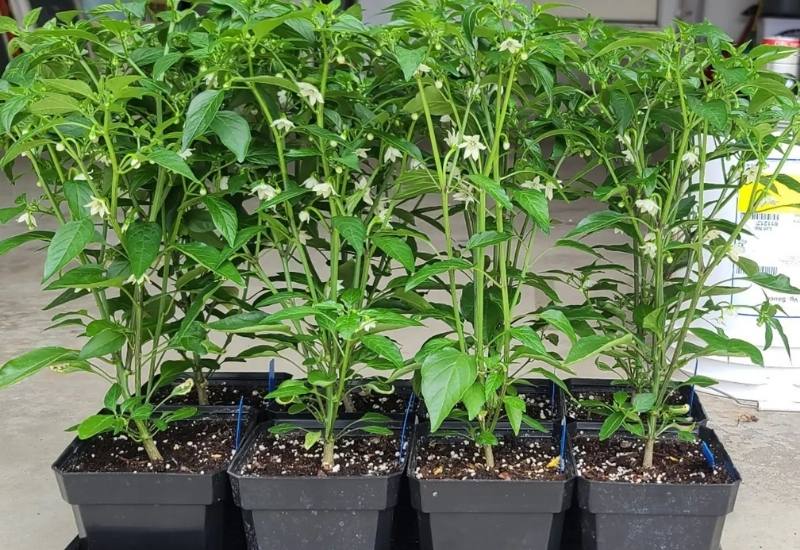
Shishito peppers also grow very well in pots or grow bags. Five-gallon buckets also work well. Make sure the container is at least 30cm (12inches) in diameter and deep enough to support the root system, and make sure there is adequate drainage as pepper plants will not tolerate soggy soil.
Fill the pot with your preferred potting soil mixed with plenty of compost. Make sure to monitor the plants and water them regularly as the soil in containers will dry out quickly, especially in grow bags.
Shishito Pepper Problems
Harvesting Shishito Peppers
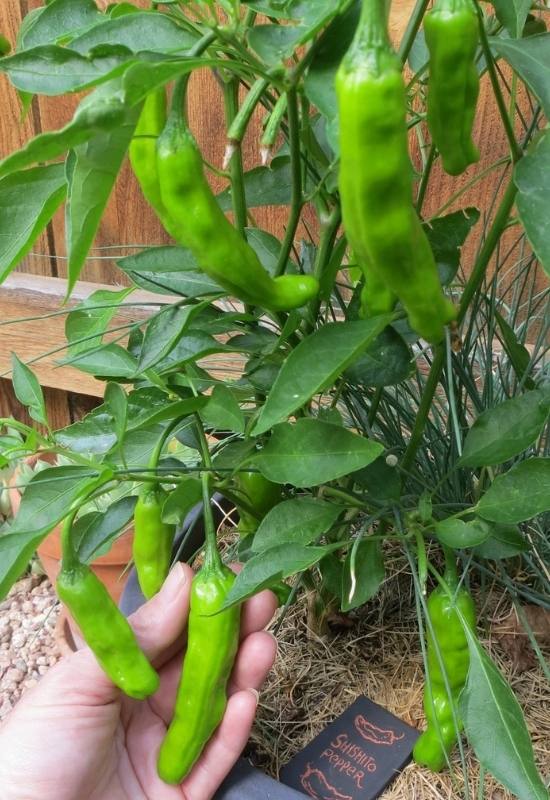
Shishito peppers take 60 days to reach maturity from transplanting, so in about 120 to 150 days from germination, you will start having green peppers on your plants. It can take a further three weeks for your shishito peppers to change to red.
The shishito peppers are ready to harvest when they are about 5cm to 10cm (2-4 inches) long and firm. They can be harvested green, allowed to ripen to red, or at any stage in between.
Harvesting green peppers will encourage more growth so you will have higher yields, but red shishito peppers are sweeter and higher in Vitamin C.
To harvest, snip the stem just above the pepper to remove it from the plant. Trying to snap the pepper off can damage the plant.
Conclusion
As a northern gardener, I have always shied away from any tropical plant that needs lots of heat and sunlight to grow.
But with a little extra attention, shishito peppers can be cultivated in most gardens around the globe.
If you live in a warm climate, you are ideally situated to grow them. Maybe it’s time to add shishito peppers to your next seed order, and a little bit of heat in the kitchen.

Written By
Amber Noyes
Amber Noyes was born and raised in a suburban California town, San Mateo. She holds a master’s degree in horticulture from the University of California as well as a BS in Biology from the University of San Francisco. With experience working on an organic farm, water conservation research, farmers’ markets, and plant nursery, she understands what makes plants thrive and how we can better understand the connection between microclimate and plant health. When she’s not on the land, Amber loves informing people of new ideas/things related to gardening, especially organic gardening, houseplants, and growing plants in a small space.

